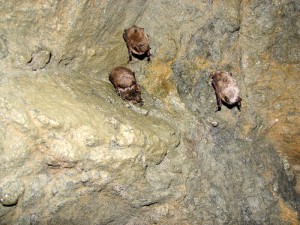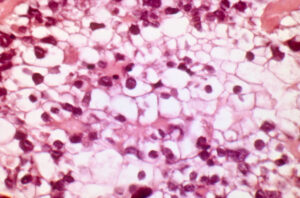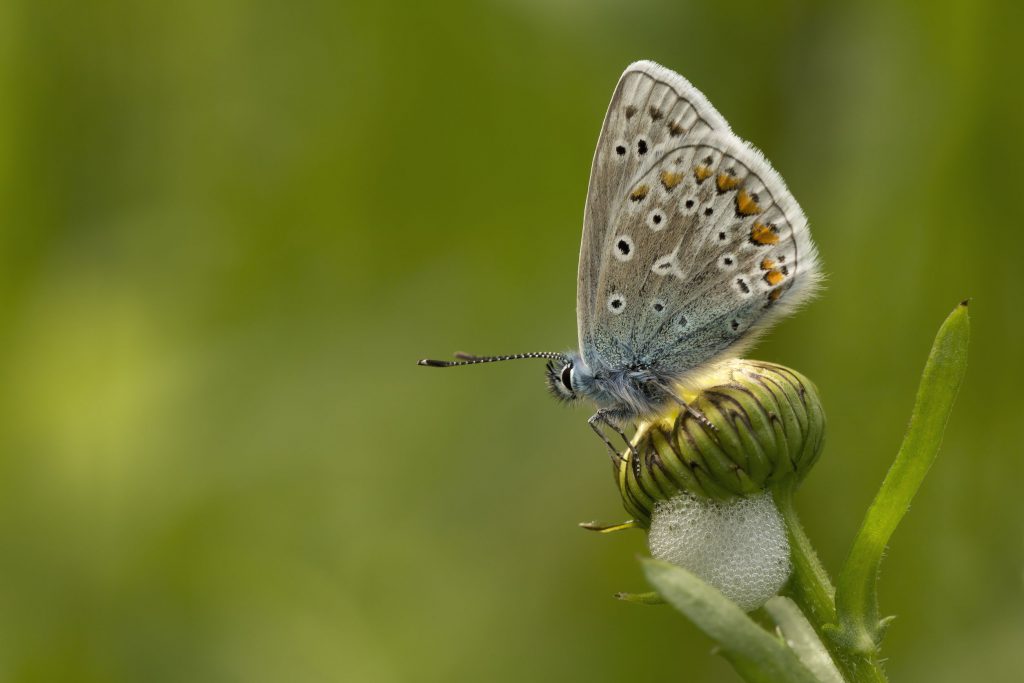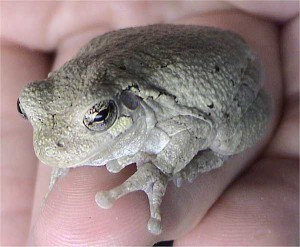In a previous post, I wrote about White-Nose Syndrome (WNS) in hibernating bats in North America. WNS was first documented on February 2006, by a recreational caver exploring Howes Cave in New York, who photographed a bat with an unusual white growth on its muzzle. In the few years since that picture was snapped, hundreds of thousands of bats in North America have died from White-Nose Syndrome (1,2).
Suffering bats are emaciated with little or no body fat and have a characteristic white fungal growth on their wing membranes, ears and muzzles. Instead of hibernating all winter, these bats can be seen active in the snow, when there is virtually no food available for them (1,2).
The white fungal growth observed on the bats is the result of infection with a cold-loving fungus, which has been identified as a new species within the Geomyces genus, Geomyces destructans (note added in 2016: this fungus is now called Pseudogymnoascus destructans) (1,3). Analysis of G. destructans samples suggests that the bats have been infected with G. destructans originating from a single source (3).
So far, according to Dr. David Blehert at the United States Geological Survey (USGS) – National Wildlife Health Center, no data indicate that there is any other etiologic agent at play here. G. destructans is the primary suspect. G. destructans has been found on hibernating bats in caves in Germany, France, Hungary, and Switzerland. However the affected bats in Europe are not emaciated, and those affected bats that were tracked after the initial isolation remained healthy (4). As far as scientists can tell, the European and North American isolates of G. destructans are the same.
In a new opinion paper published in BMC Biology, Cryan and colleagues put forth several hypotheses about how infection with G. destructans could cause the mortality observed in the North American bat populations (5).
Continue reading “Does a White Nose Belie a Wing Load of Problems? More on WNS”





 Parallel construction signals to the reader that two ideas are of equal importance. If two or more ideas or items are connected by a coordinating conjunction such as “and”, “but” or “or”, then those ideas should be expressed in parallel or equivalent grammatical constructs. Items and ideas of equal importance should be presented using equivalent grammatical structures. Items in a list should be parallel: all verbal phrases, all nouns, etc. Parallel construction guides your reader and helps your reader organize concepts on a first read of your text.
Parallel construction signals to the reader that two ideas are of equal importance. If two or more ideas or items are connected by a coordinating conjunction such as “and”, “but” or “or”, then those ideas should be expressed in parallel or equivalent grammatical constructs. Items and ideas of equal importance should be presented using equivalent grammatical structures. Items in a list should be parallel: all verbal phrases, all nouns, etc. Parallel construction guides your reader and helps your reader organize concepts on a first read of your text. 